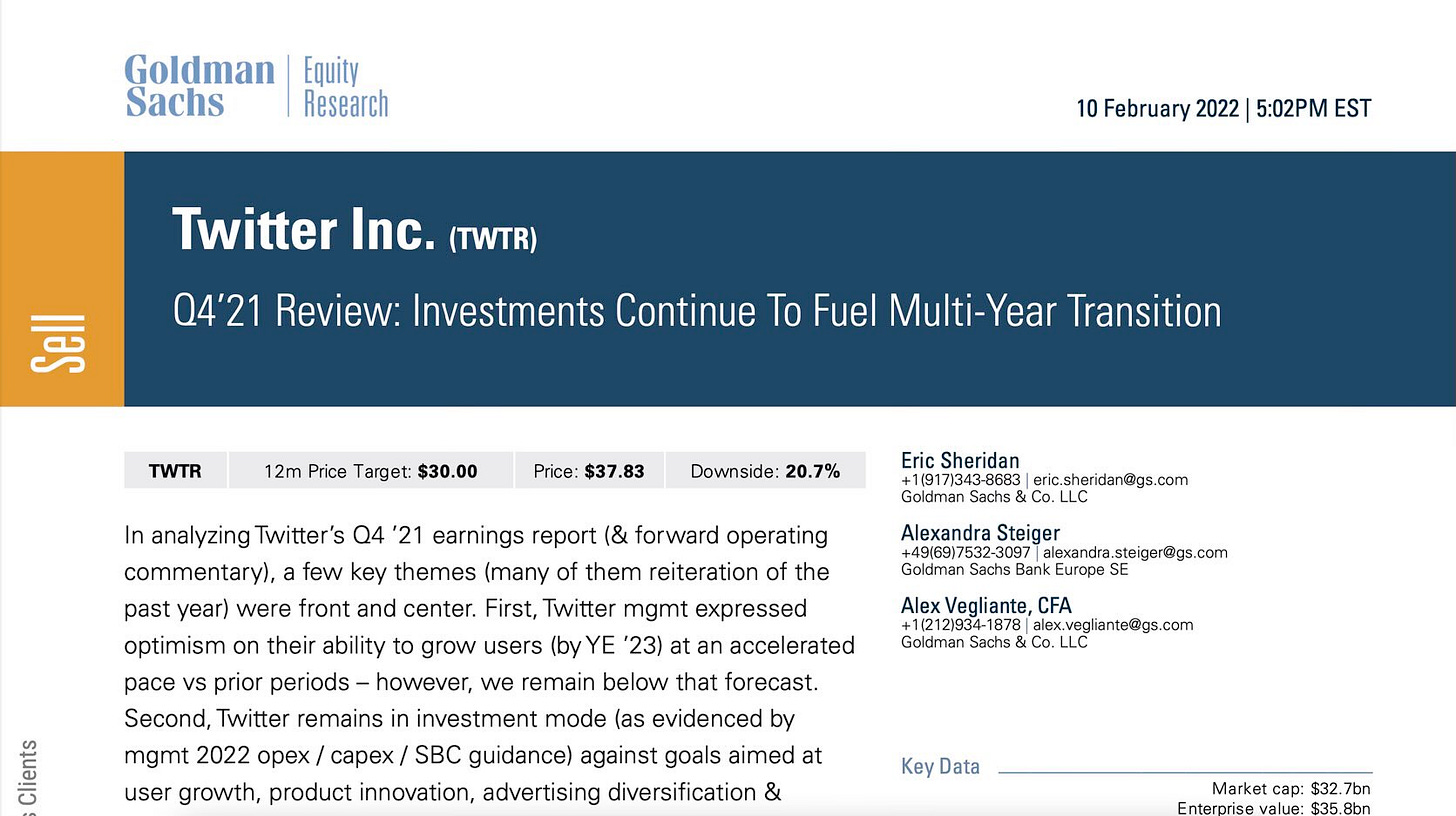“When something is important enough, you do it even if the odds are not in your favor.” – Elon Musk
Last week, Elon made an offer to buy Twitter at $54.20 per share to take it private and own the business outright. 10 days prior to making this offer, Elon purchased 9.1% of Twitter to become its largest individual shareholder.
Fast forward to the start of this week: Twitter’s board is pushing for the “poison pill.”
In short, poison pill is a tactic used by firms to prevent hostile takeovers. It dilutes ownership interest of the acquirer by allowing current shareholders an opportunity to buy more shares at a discount.
Should Twitter take the deal?
$54.20 per share offer is ~20% more than current share price. The stock hasn’t done much since it went public. It’s trading at the same price it was back in 2014. Meanwhile, S&P500 has compounded in value (on a relative basis).

The board owns almost no shares. The CEO is newly minted with little experience running the business. There are plenty of other challenges ahead for the management team.
The board has a fiduciary duty to do what’s right for shareholders. Running a process makes sense. But when you look into the horizon, there aren’t any strategic buyers that would acquire Twitter.
Big tech M&A of this rank won’t pass through regulatory hurdle. Large media companies don’t have the cash for it.
Private equity likely won’t work because the business doesn’t have the financial profile to lever up. To be frank, it’s probably overvalued at the current price – let alone at $54.20 per share.
Twitter’s annual EBITDA last 3 years:
- 2021: $818M (+57% YoY)
- 2020: $522M (-37% YoY)
- 2019: $832M (-5% YoY)
At the current market cap of ~$34B, Twitter is overvalued for almost any PE investor. It’s a valuable brand and asset, but market cap is hard to justify.
We know Twitter has engaged Goldman Sachs to help manage the process. Elon has apparently engaged Morgan Stanley to assist him.
For fun, here’s Goldman’s equity research from Feb 2022 (before the drama began).

If they don’t sell to Elon, he will dump his 9.1% stake; effectively dropping the stock back in the $30-ish range again.
And for even more fun, here’s the board of Twitter and some commentary.Chris Bakke @ChrisJBakkeElon Musk is in for a bad time. I’m not sure he’s prepared to take on a couple PhDs, a few MBAs, and a Baroness who use Twitter once a year (to reset their passwords) and collectively own 77 shares of the company. April 16th 20224,824 Retweets41,487 Likes
The board’s interest don’t seem aligned with shareholder’s interest.
Lesson for startup founders:
If someone joins your board (at any stage of growth), they should have skin in the game. Public boards have gotten perverted over the last few decades and its hurting companies.
Be selective with who you bring on-board. CEO’s job is to help manage the board. Not the other way around.
Approach it the same way you’d approach management team building internally.
An effective startup board has the following:
- CEO
- 1 VC (or influential financial investor)
- 3 peer CEOs
The first two are pivotal. As for 3 peer CEOs or 2 CEOs and 1 legal counsel, etc… that’s flexible and up to the CEO. Optimize for cognitive diversity.
Ideal board size for an early-stage startup is 5 members.
Compensation for the board varies greatly. Early-stage companies can provide stock grants ranging from 0.25% up to 2.0%. Later stage startups will have a mix up stock options and base comp. Later stage companies will also increase their size of the board.
Here’s a nice matrix from Brad Feld to help you build your board.

Boards can’t make your company (operators do that), but they can break it (with bad advice). Be thoughtful and strategic about who your bring on-board.